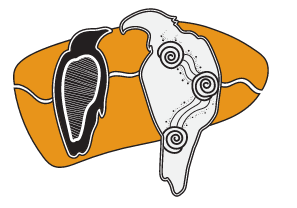This special place on Taungurung Country is where the White Bellied Sea Eagle calls home
April 19, 2023
Tahbilk Winery Estate is well known for its wine but this place encompasses so much more. Few would know that the Estate boasts 1,214 hectares of river flats and a biodiverse wetland habitat that is a haven for wildlife. With the land and waring (Goulburn River) at the heart of all they do, Tahbilk is serious about protecting and regenerating the land. They are proud to have been certified Net Carbon Zero by Toitu Envirocare, are Certified by Sustainable Winegrowing Australia and have revegetated 180 hectares of land using native plants. Of course the story of tabilk-tabilk (place of many waterholes in Taungurung language) connects deeply to the Taungurung story and we are proud to partner with Tahbilk to share this story through the self-guided Indigenous Flora Trail and our wawa biik guided experiences. Lachie Thomas is Tahbilk’s Environmental and Vineyard Research Analyst who has the enviable job of working amongst this beautiful ecosystem on a daily basis and is behind many of these sustainability initiatives. We yarn with Lachie about all things work, wetlands and wildlife.
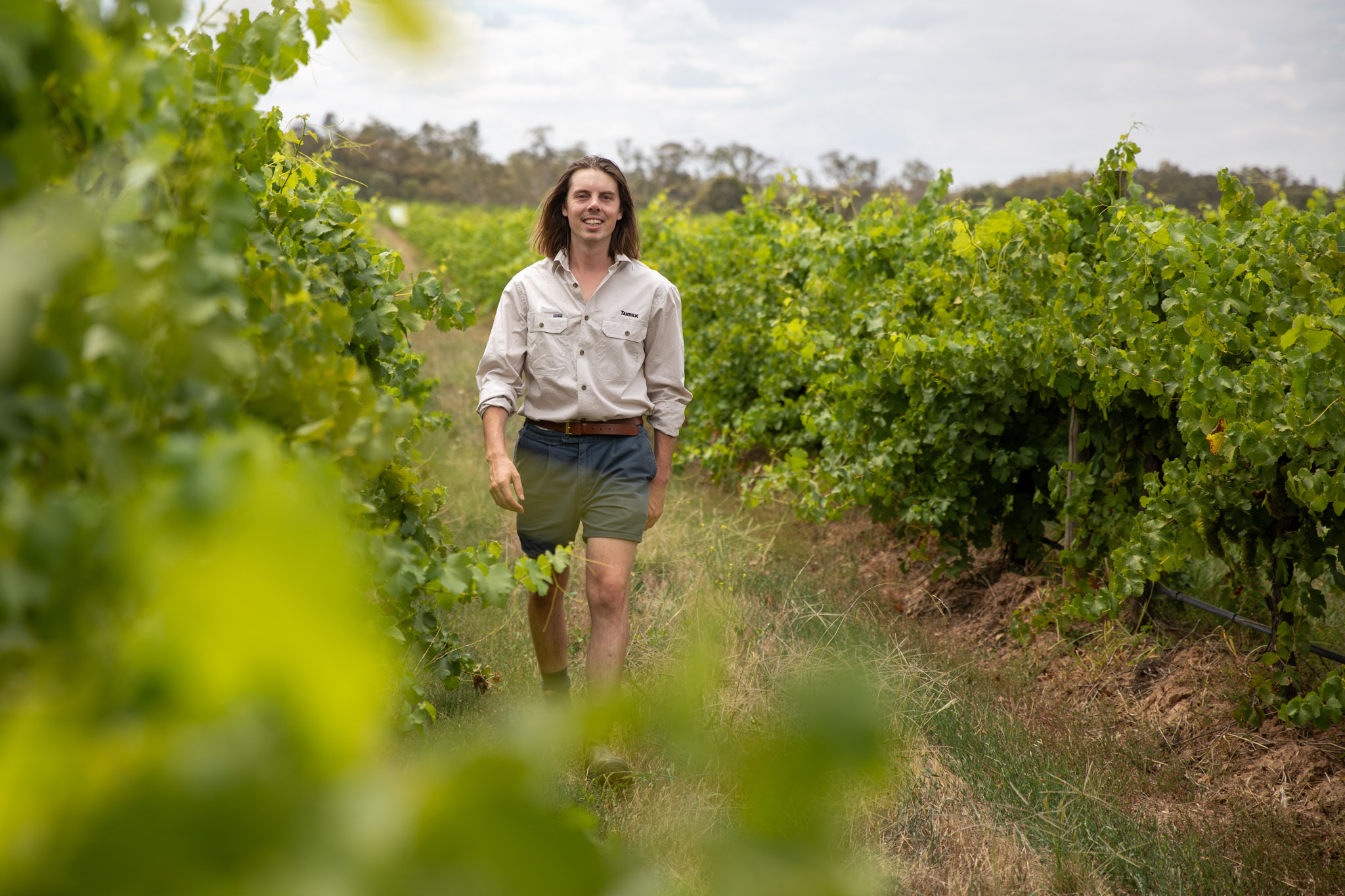
1. Tell us about your professional background and how you came to work at Tahbilk
I was part of the inaugural cohort of the Bachelor of Science Advanced (Global Challenges) at Monash University. This was an experimental degree where 25 students would do a traditional Bachelor of Science but also receive training in Leadership, Entrepreneurship, and Communication. The aim was to be able to take science beyond the lab. My scientific journey culminated in a major in ecology and an honors year researching the value of biodiversity to cattle farms. While hiking through remote Afghanistan during a year of travel after university, I listened to a podcast with Hayley Purbrick from Tahbilk. The conversation talked about technology, innovation and sustainability in agriculture – the final words from Hayley was a call to action for young people to come back after university and make a difference in rural agricultural areas. This excited me and I reached out to Hayley. 12 months later I became part of the great team.
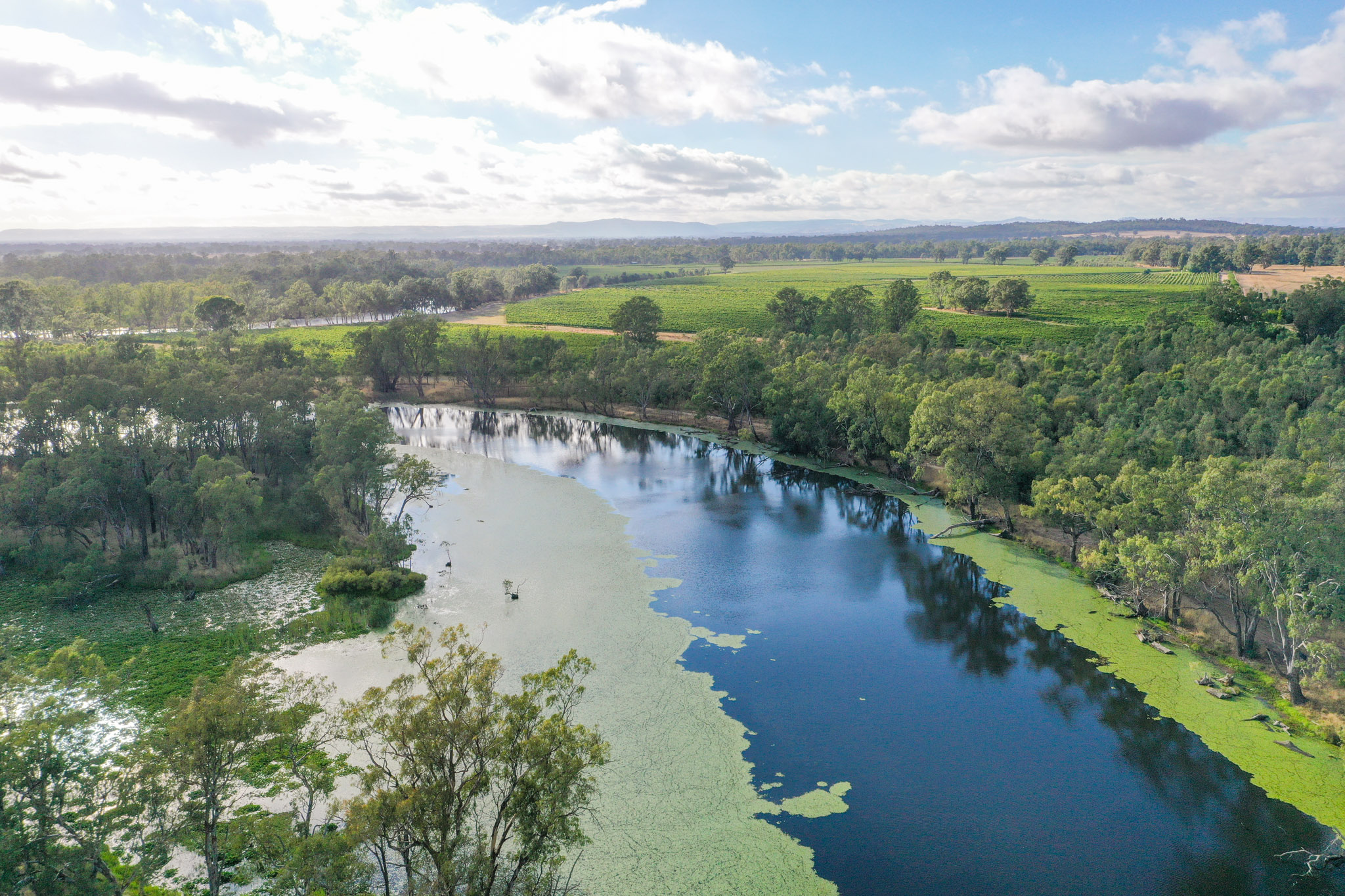
2. Introduce us to the wetlands of tabilk-tabilk
After construction of the Goulburn Weir in 1890 the seasonal waterholes of tabilk-tabilk became a permanent 8km wetland system weaving through the center of Tahbilk. Home to many endangered flora and fauna, these wetlands are an absolute treasure and a stunning place to visit. A 6km walking trail follows the curves of the wetlands as it snakes through the landscape like a meandering river. Along the way are a host of signs that talk about the local wildlife and ecology as well as the tabilk-tabilk Indigenous Flora Trail. There are also two bird hides for twitchers to view some of the many beautiful bird species that pass through and live in the wetlands. Ecological studies at Tahbilk in recent years have found 126 different species of Fauna, including 12 mammals, 105 birds, 3 reptiles and 6 frog species. A variety of revegetation projects have been completed at Tahbilk and these younger sites host a wide variety of smaller birds while the remnant red gum forests support a variety of larger birds including the endangered Sea Eagle.
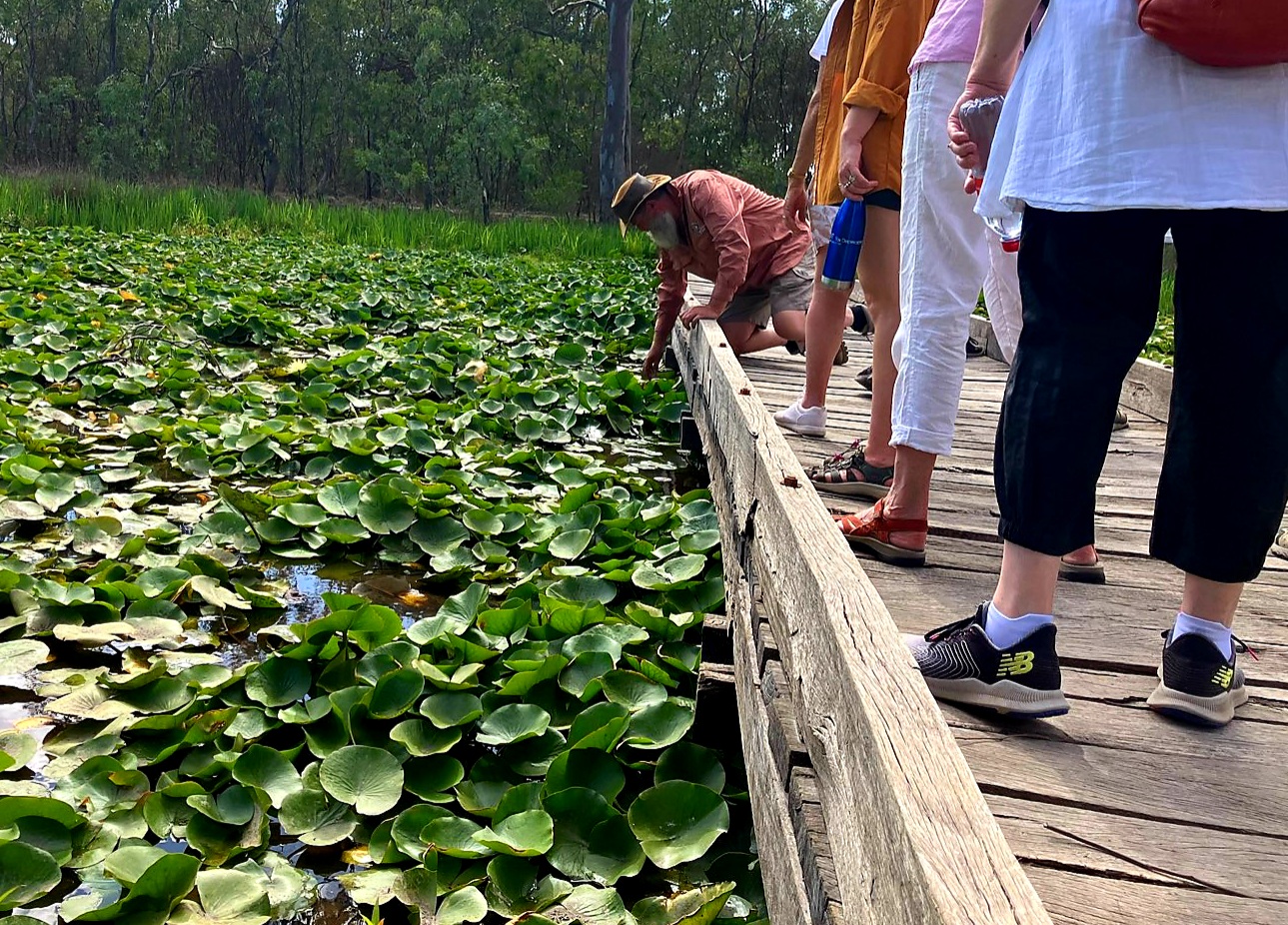
3. How is Tahbilk Estate tracking towards its goal to be leaders in environmental preservation?
Tahbilk has undertaken many projects in the wetlands to enhance the local biodiversity. Extensive revegetation has occurred on over 180Ha of Tahbilk and recent projects have been to create vegetation corridors that link the outer corners of the property all the way back to the wetlands. Trees removed during construction of the Nagambie Freeway Bypass found a new home in the wetlands as fish habitat, and projects with the Arthur Riley Institute have monitored the native catfish and released endangered pygmy perch back into the wetlands. Recently the focus on the wetlands has been to promote it as an education place and a space of connection to Taungurung knowledge and an appreciation of Country.
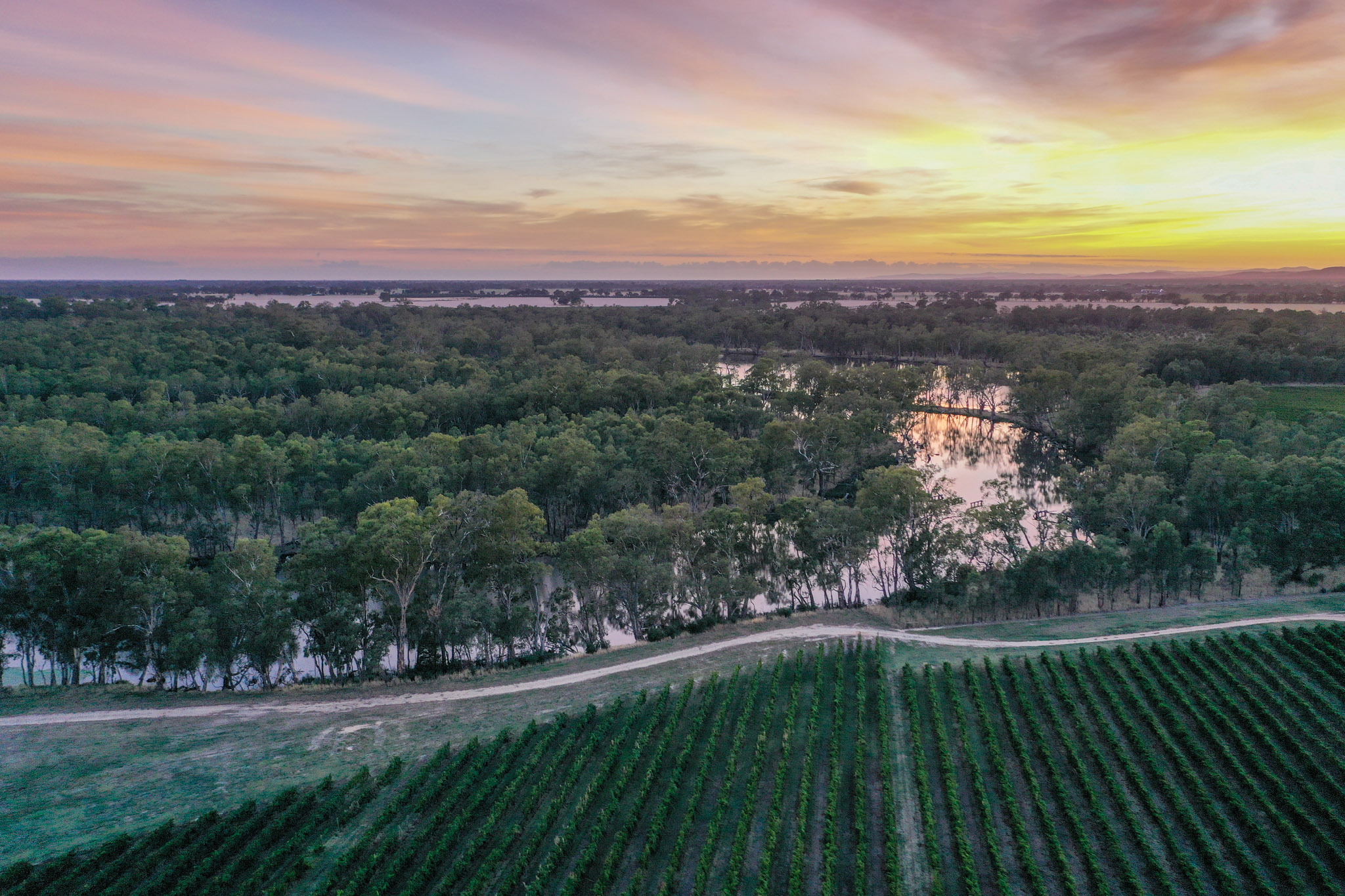
4. What impact has the recent flood event had on the vineyards, wetlands ecosytems at Tahbilk?
The flood of October 14, 2022 saw an historic amount of water spill over the river flats and flood over 100Ha of wetlands and vines. Parts of the wetlands walking trail went approximately 8-10m underwater and with the speed of the event unfortunately displaced and also killed a significant amount of wildlife. The wetlands took approximately 4 months to return to natural water levels which meant that no grasses have been able to regrow over summer. These grasses combined with many cassinia bushes being dead make the wetlands an interesting scene to observe. Birdlife however has returned to the wetlands and as we head towards winter a new flush of growth will begin. Floods can help to reinvigorate wetlands systems by bringing in seed and allowing the groundstorey to change in species composition and richness. Due to this flood being the largest in over 80 years at Tahbilk, we are witnessing a rare event and it will be fascinating to observe how the landscape and wetlands recover.
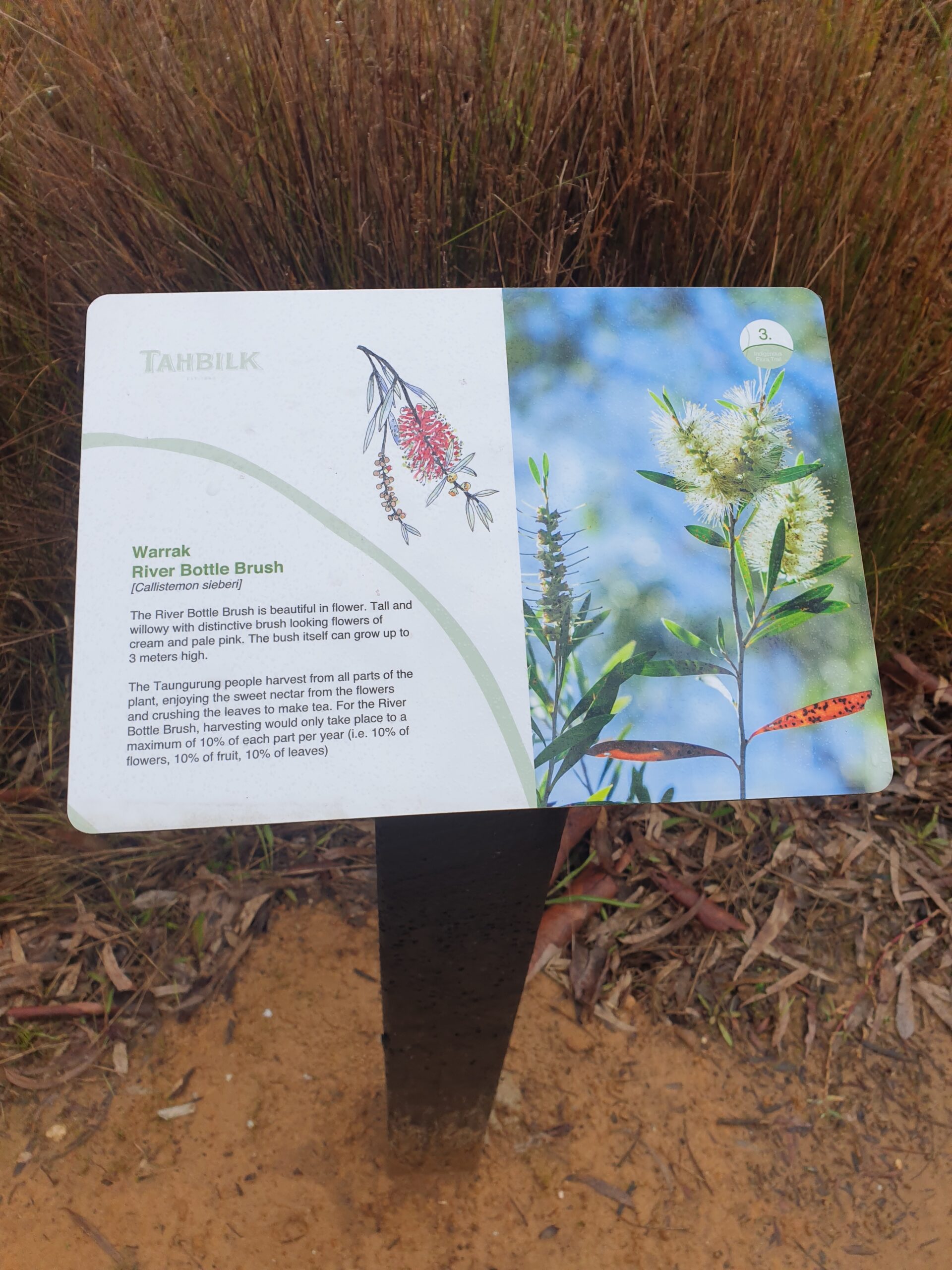
5. How did the tabilk tabilk Indigenous Flora trail come about?
The tabilk-tabilk Indigenous Flora Trail was a project developed between Tahbilk, the Goulburn Broken Catchment Management Authority and the Taungurung Land and Waters Council. The trail features 12 different species found in the wetlands with signs at each plant that indicate its indigenous name and cultural importance. It took 3 years to develop as the species were selected, the Taungurung Language determined and the signage developed. A beautiful brochure can be collected from the Tahbilk Cellar Door or Restaurant that features artwork from Taungurung Elder Uncle Mick Harding as well as all the information from the trail for you to take home. The half hour trail follows 1km of the wetlands walking trail and is a beautiful walk to tie into a visit to Tahbilk.

6. How does it feel for you personally to be working so closely with Taungurung Elders, learning more about the cultural significance of Tahbilk?
Learning with Taungurung Elders about the cultural significance of the Country Tahbilk sits on has been an incredible experience that has fostered a deeper connection with this special part of Country. The wetlands are what initially drew me to Tahbilk and to learn more about the area from a Taungurung perspective has been very special. The story of this place transcends far beyond the time the winery has existed here and drives a sense of shared custodianship and care for this place so that it can exist and thrive for generations to come.
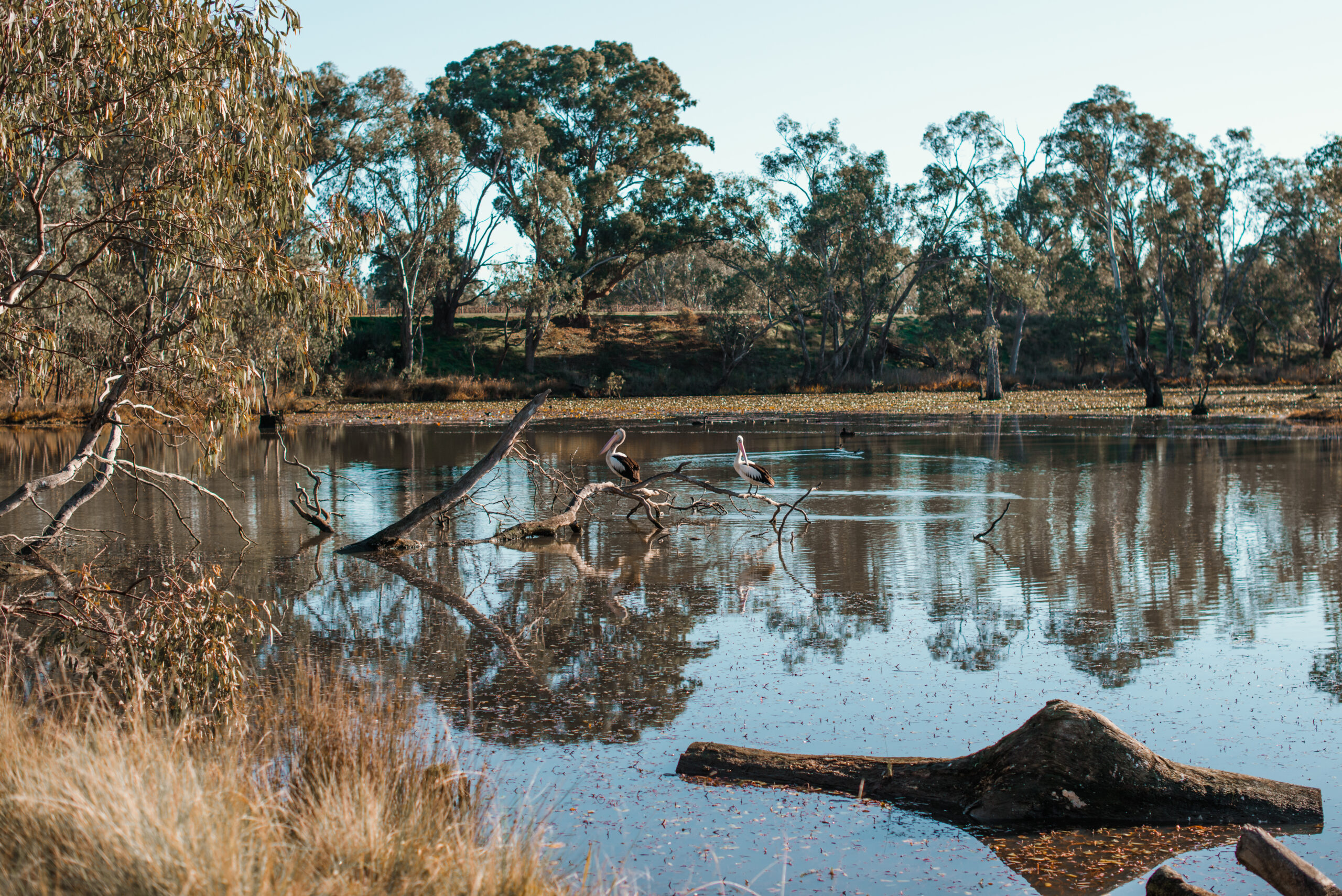
7. What have been some favourite wildlife encounters for you working at the Estate?
One of my highlights would have to be the day that I kayaked out to a favorite part of the wetlands and drifted close to a tree that had fallen into the water. On this horizontal tree, right at eye level were two white bellied sea eagles and two wedge tail eagles sitting and watching. These huge birds felt as big as me and it was an awe-inspiring moment. Day to day I love to see the black swans as they take flight, the pelicans gracefully looking for a feed, or the cormorants drying their wings. I do feel bad when I occasionally surprise a turtle that jumps from its warm sunny log back into the cold water.
We feature Tahbilk Estate in our wawa tabilk tabilk itinerary and wawa nagambie We recommend staying a while longer at the Estate - enjoy lunch at Tahbilk Restaurant and experience the historical Cellar Door. Visit their website to find out more: Tahbilk winery
